#Charles I Duke of Bourbon
Explore tagged Tumblr posts
Text

BOOK ONE: ISABELLE DE BOURBON, THE COURTIER.
The first gleam of the dawn tore apart the veil of mist, whilst two riders neared the town in silence.
The first of them was a rudy and placid man, clad in red cloth, with the bearing of a noble and the form of a man who in younger years had been warlike and vigorous, and in the older, merry and restful; dark and thick had once been his curls, now stricken with the silver of maturity, but his eyes were the same since he was just the Count of Clermont, a young lad wagging wars in the darkest days of his time: Raven eyes, small, dark and penetrating. The eyes of Bourbon.
Closely, his child followed; a young lady of the age of eight, who did not resembled her noble sire, but whose spirit already showed the virtues present in all of her kin. Her hair, braided and modestly dressed with a velvet hood, was a dark auburn, and the dark green dress she wore underneath her gray riding cloak made her face look fairer.
The shadows vanished, and Château de Chinon, legendary dwelling of Bourbons, appeared before their eyes. The young lady would never forget how the fortress stood in the distance, nestled on the high ground like a dragon of stone and history, as if its walls emerged from the entrails of that blessed land, and as she stared in awe from the saddle of her white palfrey, she would have swore upon her very soul, that Chinon stared her back too. At its stony feet, the Vienne river ran through the village, whispering undying legends of chivalry and war to all who listened.
“This shall be thy domain, my dear daughter” the man told his daughter, and his voice carried that accent that lives only the speak of those who dwell in the lands of Auvergne, “Upon my death, this land, that once was mine, shall become thine, and only thine.”
A flock of birds crossed the sky, and the child gripped the reins of her palfrey.
“Father, this place as always belonged to the blood of Bourbon…” she humbly said, “If I am to marry a man who shares not our bloodline, this domains…”
“… This domains shall still belong to thee and, once Death brings thee to their realm, it shall belong to thy heir too. And fear not, my child: Thy husband, Bourbon of name or not, shall not take thy name from you, nor thy claim, nor thy spirit” the father replied, and let out one last statement: “The blood of Bourbon never dies, my child: Royalty shall end, nobility shall end, our times shall past, but our name… It shall last.”
The child raised her head, and a faint smile of pride curved her lips: She would dearly remember that day, and that promise, until the very day it torn all apart.
“I will honour our name” she swore too, and her father smiled.
“Yes, thou shall” the noble man affirmed, “Now, let us go back to our path; Burgundy awaits thee, Isabelle.”
@catherinemybeloved / @nealsneen / @ricardian-werewolf
#The lady of chinon#1444#isabelle de bourbon#Charles I Duke of Bourbon#Historical fanfiction#chateau de Chinon
9 notes
·
View notes
Text
youtube
#history#royal history#lindsay holiday#philippe I duke of orleans#queer#queer history#philippe de lorraine#henriette anna of england#louis xiv#armand de gramont#elizabeth charlotte of the palatinate#anne lennard#armand charles de la porte de la meilleraye#charles II#aphra behn#her history#henry of prussia#blainville#count la roche laymon#christian ludwig von kaphengst#frederick II#isabella of bourbon-parma#joseph II#maria christina of teschen#ludwig viktor of austria#luisa isabel alvarez de toledo#leoncio gonzalez de gregorio#liliana maria dahlmann#ivar mountbatten#mavendra singh gohil
2 notes
·
View notes
Text
The Consequences of the Massacre of Wassy
Commerative plaque to the Massacre at Wassy (Photo credit: Ji-Elle from Wikimedia Commons) French history has been a favorite of mine since college days when the designated professor was eccentric and gave fascinating lectures. Those are fond memories. Recently, my reading list has included lots of French history, especially the sixteenth century and the Renaissance era. A certain incident in…

View On WordPress
#Antoinette de Bourbon#Catherine de’Medici#Charles IX#Duke of Guise#Elizabeth I#Francis II#French Catholics#French history#French Reformation#French Wars of Religion#King of France#Mary Queen of Scots#Mary Stuart#Massacre of Wassy#Protestants#Queen of England#Queen of France#Queen of Scotland#Renaissance#Stuart history#Tudor history#Wassy
2 notes
·
View notes
Text
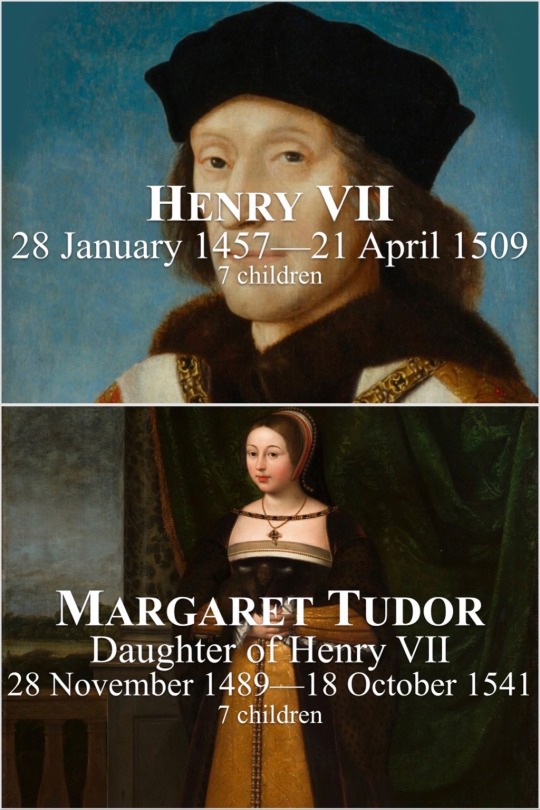




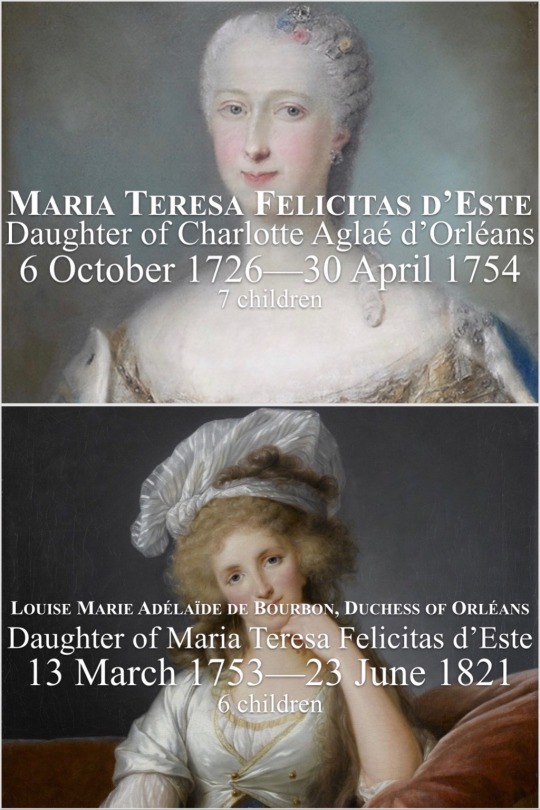
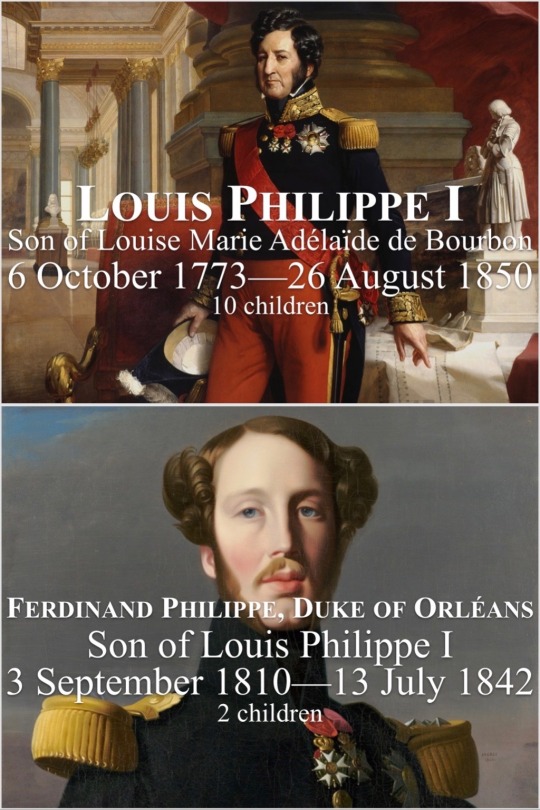
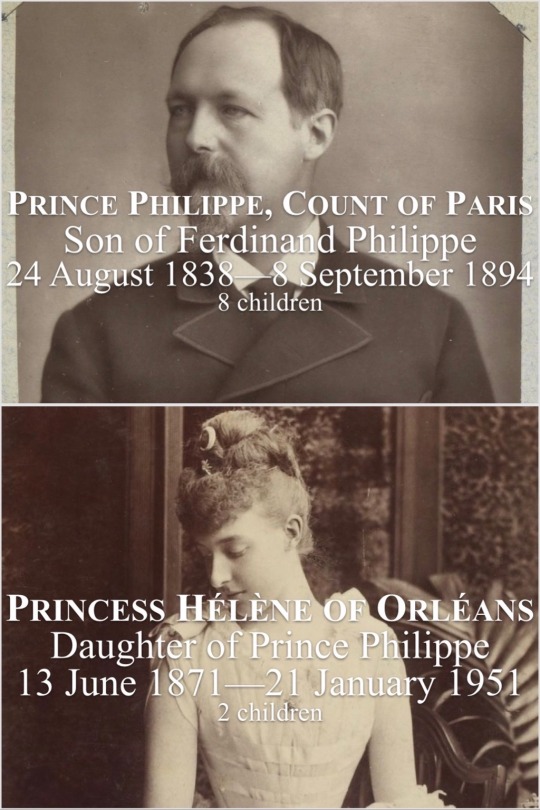
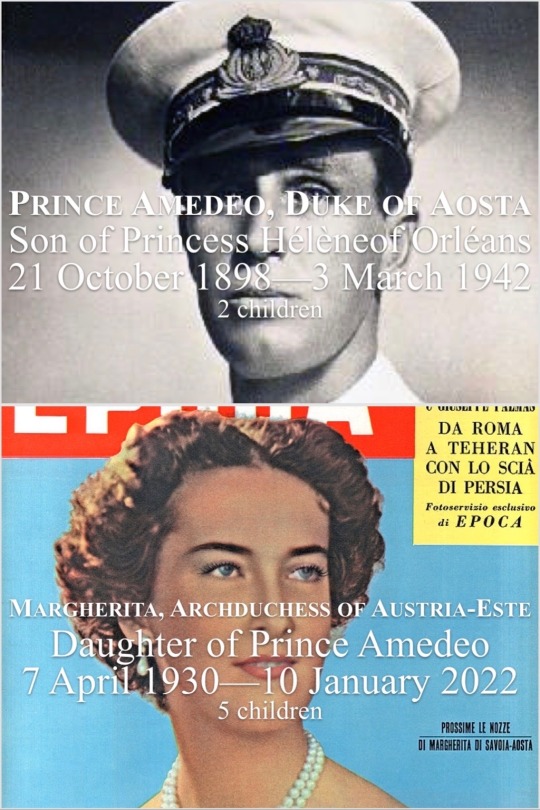
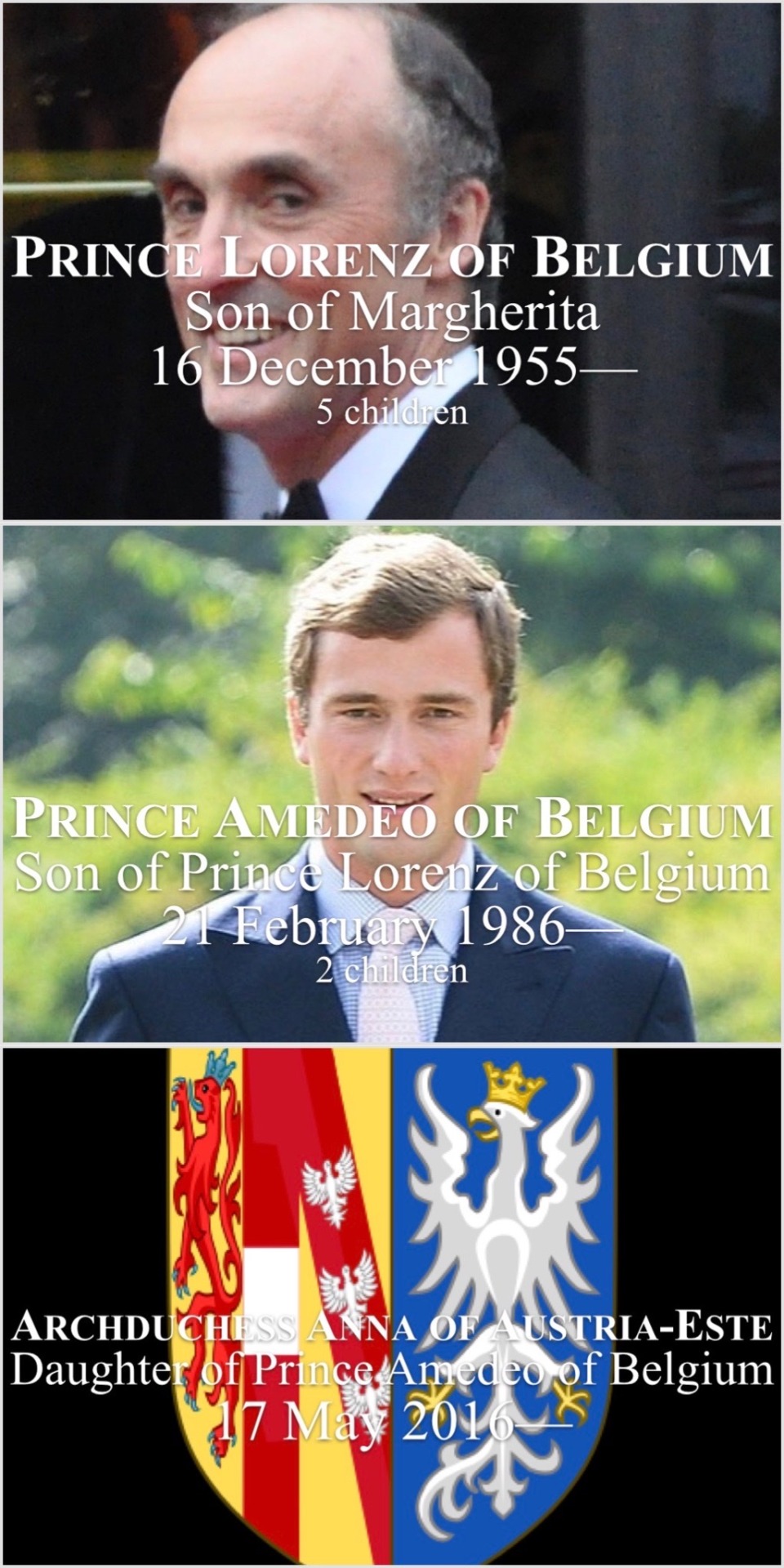
Descendants of the Tudors
#descendants of the tudors#henry vii#margaret tudor#james v#mary queen of scots#james vi and i#elizabeth stuart#charles i louis#elizabeth charlotte madame palatine#philippe ii duke of orléans#charlotte aglaé d’orléans#maria teresa felicitas d’este#louise marie adélaïde de bourbon#louis philippe i#ferdinand philippe duke of orléans#prince philippe count of paris#princess hélène of orléans#prince amedeo duke of aosta#margherita archduchess of austria este#prince lorenz#prince amedeo
8 notes
·
View notes
Text

Carolina Ferdinanda Louisa of Sicily (1798-1870). Wife of Charles Ferdinand, Duke of Berry, in the Park of Bagatelle in the Bois de Boulogne Near Paris
Artist: François Gérard (French, 1820-1837)
Date: 1820-1837
Medium: Oil on canvas
Collection: Rijksmuseum, Amsterdam, Netherlands
Description
Portrait of the Duchess of Berry, Carolina Ferdinanda Louisa of Sicily (eldest daughter of Francis I, King of Naples), wife of Charles Ferdinand, Duke of Berry, in the park of Bagatelle in the Bois de Boulogne near Paris. Full length, sitting on a garden bench by a garden vase. On the right at her feet a little dog.
Marie-Caroline of Bourbon-Two Sicilies, Duchess of Berry
Marie-Caroline of Bourbon-Two Sicilies, Duchess of Berry (Maria Carolina Ferdinanda Luise; 5 November 1798 – Brunsee, Styria, Austria 16 April 1870) was an Italian princess of the House of Bourbon who married into the French royal family, and was the mother of Henri, Count of Chambord. She led an unsuccessful rebellion against King Louis-Philippe I to install her son on the French throne.
#portrait#painting#duchess of berry#carolina ferdinanda louisa of sicily#full length#female#oil on canvas#fine art#oil painting#artwork#french culture#french art#woman#seated#park#bagatelle#bois de boulogne#france#urn#dog#white dress#hat#red shawl#italian princess#house of bourbon#french royal family#francois gerard#french painter#european art#19th century painting
20 notes
·
View notes
Photo

Michel de L'Hospital
Michel de L'Hospital (also known as L'Hôpital, c. 1505-1573) was a French statesman who served during the reigns of four kings – Francis I, Henry II, Francis II, and Charles IX – as Councillor of Parlement (1537), Chancellor of the Duchesse de Berry (1550), the first president of the Chamber of Accounts (1555), and Chancellor of France (1560-1568).
At a time when "one king, one law, one faith" was the almost unanimous opinion of French people, L'Hospital advanced the concept of the separation of the state and church to free France from unending religious conflicts. He considered freedom of conscience as the first condition of social peace and worked tirelessly for peace between competing confessions.
Early Life
Michel de L'Hospital was born in 1505 or 1506 in the small town of Aigueperse in Auvergne. His father Jean was attached to the service of Charles de Bourbon, Constable of France, and sent his son to Toulouse for his studies. He only spent two years at Toulouse, but the atmosphere of violence that characterized the Protestant Reformation in France influenced what became a lifelong commitment to oppose all forms of intolerance.
During this time, the fortunes of Michel's father Jean were reversed by the troubles of Charles III, Duke of Bourbon (l. 1490-1527), viewed as a rival by King Francis I of France (r. 1515-1547). Bourbon was accused of a treasonous alliance with Charles V, Holy Roman Emperor (l. 1500-1558). Jean was viewed as Bourbon's accomplice, leading to the confiscation of his property and Michel's arrest at Toulouse. Once released, he left for Italy to join his father in Milan. Jean lost everything at his patron's death when Charles de Bourbon was killed during the siege of Rome in 1527. Michel and his father went to Rome where Cardinal de Grammont persuaded both men to return to France. Michel's father was unable to recuperate his lands and left for Lorraine, where he died. In 1537, Michel married Marie Morin, the daughter of a high court official, the lieutenant-criminel of the Châtelet, with whom he had three daughters, and became a councillor in Parlement as part of the dowry.
Continue reading...
17 notes
·
View notes
Text
What perfume/cologne would the Van Der Linde gang wear


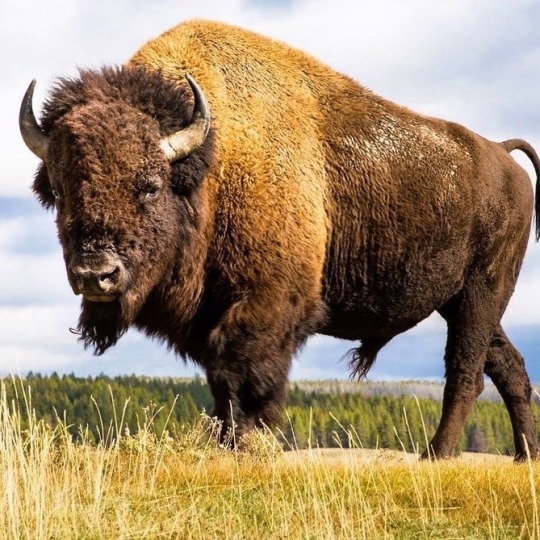
hi!! this is my first tumblr post, and i don’t exactly know how to do this or work the app, so forgive me if this is horribly worded or confusing.
anyways, this is my opinion on what colognes or perfumes the gang would wear. horses and cain included, since they are technically a member of the gang!!
Abigail -
something woodsy, maybe like the forest or a campfire, cedar wood, trees, plants.
examples:
- G-Water
- Tam Dao
- Snoqualine
Arthur -
tobacco, scent of alcohol, mud, outdoors.
examples:
- Jasmin et Cigarette
- Rien
- Earthworm
Baylock -
ashes, grease.
examples:
- Tobacco Blaze
- Garage
- La Yuquam Homme
Bill -
any popular male fragrances, or like gunpowder and fire.
examples:
- 9mm Ballistic Therapy
- High Noon
- Campfire Nights
Boaz -
dynamite, money.
examples:
- Wall Street
- Don Xerjoff
- 1805 Tonnerre BeauFort London
Branwen -
oatcakes, apples, water.
examples:
- Lostmarch Lann-Ael
- Be Delicious
- Cavalli Acqua
Bob -
blood, gunpowder, sweat.
examples:
- Vena Cava
- Richard Dark Side
- Secretions Magnefique
Brown Jack
pomade, alcohol, blood.
examples:
- Classic Fragrance
- Heeley Agarwood
- Molotov Cocktail
Cain -
dog, mud, grass.
examples:
- La Panthere Edition Soir
- Grass
- Zoologist Bat
Charles -
light florals, nature, clean fur.
examples:
- Coach Floral
- Super Cedar
- Coyote
Dutch -
blood, metal, tears.
examples:
- Vassago
- Spacewalk
- Rainy Season of Dresden
Davey -
snow, wood, fire.
examples:
- Waltz of the Snowflakes
- Tobacco Vanille
- Inquisitor
Enis -
whiskey, beer, grass.
examples:
- Tom Oud
- Stout ‘n Smoke
- Dune Road
Grimshaw -
sulfur, metal, cinnamon.
examples:
- Bloody Smoke
- Vanille Absolu
- Jupiter
Gwydion -
birds, leather, salt.
examples:
- Seemannn
- Black Saffron
- Millésime Impérial
Hosea -
moonshine, stew, metal.
examples:
- Moscow Mule
- Starfish & Coffee
- Santal 33
Jack -
water, horse, corn oil.
examples:
- Petrichor
- Cuir de Russie
- Seems Legit
Javier -
mahogany, cotton, musk.
examples:
- Redwood Leaves
- Lazy Sunday Morning
- Urban Musk
Jenny -
snow, wool, wood.
examples:
- Redwood Mist
- Battaniye
- Grey Vetiver
John -
sweat, musk, grease
examples:
- Flores Negras
- Silver Musk
- Cristina La Veneno Ni Puta Ni Santa
Kieran -
blood, grass, oats.
examples:
- Hora de la Verdad Sombra
- Figuier Eden
- Harran
Karen -
beer, guns, whiskey.
examples:
- Beguile
- Wicked John
- Kutay
Lenny -
blood, books, bullets.
examples:
- Seems Legit
- Diamonitirion - elixir atonit
- Moon Child
Mac -
metal, bullets, kerosene.
examples:
- Craft
- Iron Duke
- Nuvolari Rubini
Maggie -
dirt, stone, bog.
examples:
- Le Sillage Blanc
- During the Rain
- Swamp elixir
Mary-Beth -
books, ink, gold.
examples:
- Bibliophilia: Love of Books
- Supreme Vanilla
- Royal Blood
Micah -
rot, corn, mold.
examples:
- Saint Louis Cemetery #1
- Funerie
- French Kiss
Molly -
roses, grass, trees.
examples:
- Roses Musk
- Leila Lou
- Colors de Benetton
Nell II -
sweat, cows, pig.
examples:
- Amyi 3.17
- Cuir de Russie
- Hyrax
Old Belle -
carrots, beer, hay.
examples:
- Carotte
- Sónar
- Basilico & Fellini
Old Boy -
musk, tears, cow.
examples:
- Another 13
- Ozone
- Osmanthus
Pearson -
meat, vegetables, crawfish.
examples:
- Gino: Steak Scented Eau de Parfum
- Eau de Cuisine
- Wild Carrot Oud
Reverend -
whiskey, incense, coffee.
examples:
- 7 Loewe
- Bourbon e Fava Tonka
- Black Opium
Sadie -
blood, tears, gunpowder.
examples:
- Bull’s Blood 2nd Edition
- Cool Glacier
- Rendez-Vous!
Sean -
whiskey, sweat, bullets.
examples:
- Malt Akro
- Monochrome
- Amour Nocturne
Silver Dollar -
fire, wool, metal.
examples:
- Encens Pyro
- The Sheepfold, Moonlight
- Rosenrot
Taima -
deer, blood, meat.
examples:
- Ma Bete
- Trinity Blood
- Good Girl Gone Bad
The Count -
sugarcubes, peaches, pears.
examples:
- Pixie Dust
- Allure Eau de Parfum
- First Base
Trelawny -
doves, rabbits, silk.
examples:
- Ruğa Sablo
- Wet Garden
- Baklava Musk
Tilly -
bullets, baby powder, swamps.
examples:
- 266ts Pontiff’s Harley
- Cashmere Mist Eau de Toilette
- Haxan
Uncle -
manure, horse, cow.
examples:
- D’zing
- L’heure Fougueuse
- Zoologist Cow
again, this is my first post so i’m very sorry about it being bad or isn’t looking right for tumblr. so sorry.
#rdr2#van der linde gang#arthur morgan#john marston#dutch van der linde#hosea matthews#micah bell#red dead redemption 2
25 notes
·
View notes
Text
Mardi Gras History

The origins of Mardi Gras can be traced to medieval Europe, passing through Rome and Venice in the 17th and 18th centuries to the French House of the Bourbons. From here, the traditional revelry of "Boeuf Gras," or fatted calf, followed France to her colonies.
On March 2, 1699, French-Canadian explorer Jean Baptiste Le Moyne Sieur de Bienville arrived at a plot of ground 60 miles directly south of New Orleans, and named it "Pointe du Mardi Gras" when his men realized it was the eve of the festive holiday. Bienville also established "Fort Louis de la Louisiane" (which is now Mobile) in 1702. In 1703, the tiny settlement of Fort Louis de la Mobile celebrated America's very first Mardi Gras.
In 1704, Mobile established a secret society (Masque de la Mobile), similar to those that form our current Mardi Gras krewes. It lasted until 1709. In 1710, the "Boeuf Gras Society" was formed and paraded from 1711 through 1861. The procession was held with a huge bull's head pushed along on wheels by 16 men. Later, Rex would parade with an actual bull, draped in white and signaling the coming Lenten meat fast. This occurred on Fat Tuesday.
New Orleans was established in 1718 by Bienville. By the 1730s, Mardi Gras was celebrated openly in New Orleans, but not with the parades we know today. In the early 1740s, Louisiana's governor, the Marquis de Vaudreuil, established elegant society balls, which became the model for the New Orleans Mardi Gras balls of today.
The earliest reference to Mardi Gras "Carnival" appears in a 1781 report to the Spanish colonial governing body. That year, the Perseverance Benevolent & Mutual Aid Association was the first of hundreds of clubs and carnival organizations formed in New Orleans.
By the late 1830s, New Orleans held street processions of maskers with carriages and horseback riders to celebrate Mardi Gras. Dazzling gaslight torches, or "flambeaux," lit the way for the krewe's members and lent each event an exciting air of romance and festivity. In 1856, six young Mobile natives formed the Mistick Krewe of Comus, invoking John Milton's hero Comus to represent their organization. Comus brought magic and mystery to New Orleans with dazzling floats (known as tableaux cars) and masked balls. Krewe members remained anonymous.
In 1870, Mardi Gras' second Krewe, the Twelfth Night Revelers, was formed. This is also the first recorded account of Mardi Gras "throws."
Newspapers began to announce Mardi Gras events in advance, and they even printed "Carnival Edition" lithographs of parades' fantastic float designs (after they rolled, of course - themes and floats were always carefully guarded before the procession). At first, these reproductions were small, and details could not be clearly seen. But beginning in 1886 with Proteus' parade "Visions of Other Worlds," these chromolithographs could be produced in full, saturated color, doing justice to the float and costume designs of Carlotta Bonnecase, Charles Briton and B.A. Wikstrom. Each of these designers' work was brought to life by talented Parisian paper-mache' artist Georges Soulie', who for 40 years was responsible for creating all of Carnival's floats and processional outfits.
1872 was the year that a group of businessmen invented a King of Carnival, Rex, to preside over the first daytime parade. To honor the visiting Russian Grand Duke Alexis Romanoff, the businessmen introduced Romanoff's family colors of purple, green and gold as Carnival's official colors. Purple stands for justice; gold for power; and green for faith. This was also the Mardi Gras season that Carnival's improbable anthem, "If Ever I Cease to Love," was cemented, due in part to the Duke's fondness for the tune.
The following year, floats began to be constructed entirely in New Orleans instead of France, culminating with Comus' magnificent "The Missing Links to Darwin's Origin of Species," in which exotic paper-mache' animal costumes served as the basis for Comus to mock both Darwin's theory and local officials, including Governor Henry Warmoth. In 1875, Governor Warmoth signed the "Mardi Gras Act," making Fat Tuesday a legal holiday in Louisiana, which it still is.
Like Comus and the Twelfth Night Revelers, most Mardi Gras krewes today developed from private social clubs with restrictive membership policies. Since all of these parade organizations are completely funded by their members, New Orleanians call it the "Greatest Free Show on Earth!"
20 notes
·
View notes
Text
Prince Laurent of Belgium
CHAPTER TWO: Vacation on the Mediterranean Sea

Featuring Prince Laurent of Belgium and Prince Carlo, Duke of Castro
I'm a crew hand working on the luxury yacht, Charles, where we float rich people around to see places on the Mediterranean Sea near Saint-Tropez for weeks on end. You'd think I'd be bored the whole time, but there's also quite a number of men who propositioned me, including many married guys. I obliged when I was super horny. And today's group were Prince Laurent of Belgium and Prince Carlo of Bourbon-Two Sicilies who wanted to spend time with their wives and children.
There was very little conversation during the first days of the journey, in fact I'd say hardly any at all, if you don't include the introductions. We had Prince Carlo, a handsome man with your typical trophy wife. And Prince Laurent, the younger brother of King Philippe and the so-called “black sheep” of the Belgian Royal Family, who conveyed an unspoken lust and desire in his eyes.

Today, while the wives and children were on shore shopping the afternoon away, the princes were enjoying a dip in the Mediterranean and sunbathed under protective umbrellas on the upper deck. I was performing my duties when I heard noises coming from the upper deck of the yacht. Thinking of getting a glimpse of the princes for some j/o material later, I crept quietly to the upper deck. As I got closer, I recognized the type of sound I was hearing. The sound of moaning, groaning, the dirty talk, and the sound of flesh slapping against flesh all told me that there were some heavy-duty fucking going on.
I stopped, thinking that maybe I shouldn't intrude on the princes' private moment, that maybe they brought a lady-friend on board. I was about to retreat when I remembered no one came aboard recently and noticed the voices.
"Oh fuck! Pound it deeper into my ass, Carlo!"
Holy shit! That was the voice of Prince Laurent being fucked by Prince Carlo! I stood there in shock, discovering this sexual act between the two men. Wanting to see them in the act, to see Carlo pummeling Laurent, reaching his climax while his dick was deeply embedded in his ass. I crept closer and slowly stuck my head out to see.
There, on a lounge chair, was Prince Laurent, splayed on his belly, his head buried into the chair. Behind him, Prince Carlo was viciously pounding his ass with no mercy. The sound of moaning and heavy breathing, along with the loud slapping sound of hips crashing against butt reverberating through the air. Unconsciously, I pulled out my now erect cock and began to stroke it. And without realizing it, I close my eyes and gasp audibly. When I opened my eyes, both princes were looking at me.
I was caught. The thought shocked me so much that I stumbled backward, tripped over one of the patio chairs and hit the floor. Then the next thing I knew, Prince Carlo was standing over me.
“What in Hell are you doing!” He asked as he reached down to give me a hand getting up.
As I got to my feet, I suddenly realized that he was still naked with his cock only inches from my own dick.
“Ah... ah...” I started trying to explain, but just didn’t know what to say.
We stared at each other's dicks for a long moment before he grabbed me by the back of the neck and pushed me towards Laurent.
“You're gay. Aren’t you?” He asked.
I couldn’t have lied if I wanted to. I was so frightened. I just nodded my head.
"That's why you've been hanging around us. You were looking to suck our cocks?” He asked, his blue eyes unwavering.
I tried to talk but couldn’t and just nodded my head.
"You you want to watch me finish fucking Laurent? Carlo asked. I nodded my head eagerly. “Then suck me a little and get it good and hard.” He added.
I couldn’t believe this was happening. But it was! I dropped to my knees in front of the prince and grabbed his thick cock in one hand and guided it to my mouth. Damn it. The thing was so thick that I could hardly deep throat it and just tongued the delicious head. I glanced up into his blue eyes. I enjoyed him looking down at me as I sucked the head of his cock. He tried to push more of his thick cock down my throat, but I gagged so badly that he stopped trying. Finally he pushed my head away from his dick and ordered, “Laurent, show him how to suck cock!”
The Belgian prince quickly knelt down in my place as I moved back. Then as I watched, Carlo grabbed him by the back of the head and pulled his face toward his crotch as he guided his dick to Laurent’s opened mouth. I couldn’t believe my eyes as Laurent took inch after inch of Carlo's cock down his throat until his lips were pressed against his crotch.
“You didn’t know Laurent was such a good cocksucker did you? He’s been doing nothing but talking about you since he saw you. He wants you to fuck his ass. Ain’t that right, Laurent?”
The Belgian prince grunted as he moved his mouth up and down the thick shaft of Carlo's cock.
“Get behind him and fuck him while he sucks me. Get his asshole ready for my cock.” Prince Carlo ordered.
I stripped my clothes off in a hurry, spit in my hand to wet my cock head and shaft. I expected it to be difficult to force my thick dick into Laurent’s asshole, but it slid in almost effortlessly. Then I thought of how many times Carlo must have used his big cock on his ass and understood why my dick slid in so easily. It was pure heaven pushing my dick inside of the prince's asshole as I watched him deep throating Carlo's cock. And in seconds, I had Laurent moaning and wiggling his ass as pound his ass.
Carlo then grabbed Laurent's head in both hands and started fucking the prince's mouth as hard and fast as possible. And the amazing thing was that Laurent didn’t gag. He took the mouth fucking like it was nothing. I got so excited that I reached around Laurent as I fuck him and grabbed his stubby thick cock. Then as I fuck his opened asshole, I jacked his dick. Suddenly I was cuming inside Laurent’s ass. He sensed it and wiggled his ass against my crotch as he enjoyed my load squirting deep inside of him.
“You finished with him?” Carlo asked as I pulled my dick out of Laurent's cum dripping hole.
I nodded yes as I watched Carlo pull his thick cock out of Laurent's mouth and walk around to his ass. I moved aside only enough to allow Carlo to guide his cock into Laurent's cum leaking asshole. Carlo rammed his dick as deep as it would go into Laurent's used asshole on the first stroke. Laurent arched his back and grunted as as the prince started fucking his ass hard and fast.
Watching the two princes going at it caused me to get so excited that my dick popped back up. Suddenly I had to join in on the fun, so I scooted under Laurent's belly. Staring down at me was his stubby fat cock and the huge hanging balls of Carlo of Bourbon-Two Sicilies. I started sucking Laurent's cock and grabbed Carlo's nuts, squeezing them. He let out a cry, but didn’t tell me to stop so I continued to tighten my grip on them as I deep throated Laurent's cock. And from my position underneath Laurent, I watched as Carlo's huge dick moved in and out of Laurent's asshole.
Suddenly, Carlo shot off. He jerked his dick out of Laurent's asshole and shot his load of cum on my face just as the Belgian prince came in my mouth. Hell, I had cum on me from head to dick when they finished shooting their wads.
The three of us lay in a heap for several moments. Laurent was the first one to get up. He glanced down at me in a strange way before asking, “You ain’t going to tell anyone about this are you?”
“Never. I would never do something like that.”
“Get dressed and let's find a room. I still want to fuck you. You think you can take my cock?” Carlo asked as he got to his feet and reached down and pulled me up.
“I’d love to try.” I said with a smile from ear to ear.
#Prince Laurent of Belgium#fan fiction#Vacation on the Mediterranean Sea#Prince Carlo Duke of Castro#prince laurent#prince carlo#royalty#prince royal person
50 notes
·
View notes
Text
Ages of French Queens at First Marriage
I have only included women whose birth dates and dates of marriage are known within at least 1-2 years, therefore, this is not a comprehensive list.
This list is composed of Queens of France until the end of the House of Bourbon; it does not include Bourbon claimants or descendants after 1792.
The average age at first marriage among these women was 20.
Ermentrude of Orléans, first wife of Charles the Bald: age 19 when she married Charles in 842 CE
Richilde of Provence, second wife of Charles the Bald: age 25 when she married Charles in 870 CE
Richardis of Swabia, wife of Charles the Fat: age 22 when she married Charles in 862 CE
Théodrate of Troyes, wife of Odo: age 14 or 15 when she married Odo in 882 or 883 CE
Frederuna, wife of Charles III: age 20 when she married Charles in 907 CE
Beatrice of Vermandois, second wife of Robert I: age 10 when she married Robert in 990 CE
Emma of France, wife of Rudolph: age 27 when she married Rudolph in 921 CE
Gerberga of Saxony, wife of Gilbert, Duke of Lorraine, and later of Louis IV: age 16 when she married Gilbert in 929 CE
Emma of Italy, wife of Lothair: age 17 when she married Lothair in 965 CE
Adelaide-Blanche of Anjou, wife of Stephen, Viscount of Gévaudan, Raymond III, Count of Toulouse, and later Louis V: age 15 when she married Stephen in 955 CE
Bertha of Burgundy, wife of Odo I, Count of Blois, and later Robert II: age 19 when she married Odo in 984 CE
Constance of Arles, third wife of Robert II: age 17 when she married Robert in 1003 CE
Anne of Kiev, wife of Henry I: age 21 when she married Henry in 1051 CE
Bertha of Holland, first wife of Philip I: age 17 when she married Philip in 1072 CE
Bertrade of Montfort, wife of Fulk IV, Count of Anjou, and second wife of Philip I: age 19 when she married Fulk in 1089 CE
Adelaide of Maurienne, second wife of Louis VI: age 23 when she married Louis in 1115 CE
Eleanor of Aquitaine, first wife of Louis VII and later Henry II of England: age 15 when she married Louis in 1137 CE
Adela of Champagne, third wife of Louis VII: age 20 when she married Louis in `1160 CE
Isabella of Hainault, first wife of Philip II: age 10 when she married Philip in 1180 CE
Ingeborg of Denmark, second wife of Philip II: age 19 when she married Philip in 1193 CE
Agnes of Merania, third wife of Philip II: age 21 when she married Philip in 1195 CE
Blanche of Castile, wife of Louis VIII: age 12 when she married Louis in 1200 CE
Margaret of Provence, wife of Louis IX: age 13 when she married Louis in 1234 CE
Isabella of Aragon, first wife of Philip III: age 14 when she married Philip in 1262 CE
Marie of Brabant, second wife of Philip III: age 20 when she married Philip in 1274 CE
Joan I of Navarre, wife of Philip IV: age 11 when she married Philip in 1284 CE
Margaret of Burgundy, wife of Louis X; age 15 when she married Louis in 1305 CE
Clementia of Hungary, second wife of Louis X: age 22 when she married Louis in 1315 CE
Joan II, Countess of Burgundy, wife of Philip V: age 15 when she married Philip in 1307 CE
Blanche of Burgundy, first wife of Charles IV: age 12 when she married Charles in 1308 CE
Marie of Luxembourg, second wife of Charles IV: age 18 when she married Charles in 1322 CE
Joan of Évreux, third wife of Charles IV: age 14 when she married Charles in 1324 CE
Bonne of Luxembourg, first wife of John II: age 17 when she married John in 1332 CE
Joan I, Countess of Auvergne, wife of Philip of Burgundy, and later John II: age 12 when she married Philip in 1338 CE
Joanna of Bourbon, wife of Charles V: age 12 when she married Charles in 1350 CE
Isabeau of Bavaria, wife of Charles VI: age 15 when she married Charles in 1385 CE
Marie of Anjou, wife of Charles VII: age 18 when she married Charles in 1422 CE
Charlotte of Savoy, second wife of Louis XI: age 9 when she married Louis in 1451 CE
Anne of Brittany, wife of Maximilian I, HRE, Charles VIII and later Louis XII: age 13 when she married Maximilian in 1490 CE
Joan of France, first wife of Louis XII: age 12 when she married Louis in 1476 CE
Mary Tudor, third wife of Louis XII: age 18 when she married Louis in 1514 CE
Claude of France, first wife of Francis I: age 15 when she married Francis in 1514 CE
Eleanor of Austria, wife of Manuel I of Portugal and later second wife of Francis I: age 20 when she married Manuel in 1518 CE
Catherine de' Medici, wife of Henry II: age 14 when she married Henry in 1533 CE
Mary, Queen of Scots, wife of Francis II: age 16 when she married Francis in 1558 CE
Elisabeth of Austria, wife of Charles IX: age 16 when she married Charles in 1570 CE
Louise of Lorraine, wife of Henry III: age 22 when she married Henry in 1575 CE
Margaret of Valois, first wife of Henry IV: age 19 when she married Henry in 1572 CE
Marie de' Medici, second wife of Henry IV: age 25 when she married Henry in 1600 CE
Anne of Austria, wife of Louis XIII: age 14 when she married Louis in 1615 CE
Maria Theresa of Spain, wife of Louis XIV: age 22 when she married Louis in 1660 CE
Marie Leszczyńska, wife of Louis XV: age 22 when she married Louis in 1725 CE
Marie Antoinette, wife of Louis XVI: age 15 when she married Louis in 1770 CE
38 notes
·
View notes
Text

INTROITUS: THE FAREWELL OF A DAUGHTER, 1444.
Many years later, Isabelle would recall the only occasion she had seen her mother weep. It happened a forgotten day of the year 1444, and the memory of her tears would follow her to the grave that she untimely came to rest in.
That fateful night, she was eight years of age and her heart was heavy with anguish as she restlessly laid on her bed; her beloved sister, Marie, had been wed to Jean, the young Duke of Calabria, and parted with him to his domains, leaving a void where she had once been that Isabelle felt like a grievous wound. Even at that young age, the little girl knew what it meant: Her sister would never see Bourbonnais again.
The betrothal and wedding had been result of the Duchess of Bourbon’s cunning. Seven years had passed since she had offered the hand of her firstborn daughter to the heir of the Duchess of Calabria; seven years until both the bride and the bridegroom grew to an agreeable age to be wed. Isabelle had never thought that a wedding would occur; but it did. The bride was fifteen and, dressed in a heavy dress of golden cloth and a cloak ribbed with marten, she proved the fairest of all the daughters of Bourbon; the feast, the merriment, the dances… It had all all passed like a hazy dream, until Marie had came to kiss all her siblings goodbye.
When it came time for her to bid farewell, Isabelle had pulled her sister into an embrace; her eyes were full of tears.
“Promise me that you won’t forget us.”
A sad smile curved the lips of the now Duchess of Calabria: “I promise” she had said, pinning in her hair one of the flowers of the wedding, as red as the blood of a dragon, “And hereby I make the oath that, if it is in me, my first daughter shall have your name.”
And, just as she had been by her side for years, she left.
That night, Isabelle couldn’t sleep. Dream refused to free her from the sorrows of the vigil and, after what seemed like centuries, she decided not to wait, She had slipped off the bed, light like a young bird, wrapped in her nightshirt, tiptoeing out of her bedchamber, careful not to awake her maid.
The little Isabelle found his mother in a chamber, far from her own. She wandered through the solitary halls of the castle, looking for her mother. Duchess Agnès was, together with the guards, the first in rising from bed, and the last to return to the bedchamber for the night; in light nights like those, one could see her dwelling in a empty chamber, reading her precious book of prayers, making arrangements and reading letters, or silently embroidering near the fire; she was the image of virtue and dedication, of what a duchess had to be.
She still wore the beautiful gray gown ribbed in ermine fur and embroidered in silver thread that she had worn during the ceremony, but her necklace was resting over the table, and she had made her old maid disassemble the complicated veiled headdress that she used to wear, her long, flowing auburn mane falling gloomily on her back. At her feet, a little black-wooled lap dog slept soundly. Her white hands, those hands that Marie had too, with thin and agile fingers, were eagerly embroidering a delicate piece of tapestry.
"What death doesn't take away from me, a man will do," she heard her murmur.
Her father entered the room, dressed in a simple tunic and trousers; he no longer could be considered a young man, for his black hair was now stricken with silver, and wrinkles had made their nest around his raven eyes, but he still presented himself formidable like an oak and healthy as a man younger that his years. The shadow of concern veiled his ruddy face as he inched closer to the women with whom he had shared his life.
"My lady” he said, “The hour is late, and the day has been long. Thou must return to the bedchamber.”
The duchess denied.
“The Duke of Burgundy has sent a herald to Bourbonnais today. He says that his wife is looking for girls and maidens of serving age, so that she can foster them in their court. I have to send our Isabelle; I am aware that doing so, I am giving her so many opportunities and yet...”
A long, woeful silence followed; Isabelle tiptoed closer and pressed her cheek against the wall, her heart fast with inquiry. Even though she had never met him, she knew who her noble mother alluded; Philippe, the Duke of Burgundy, who the duchess’ brother, and the master of one of the wealthiest courts in Europe; fair and wise like none other, it was no surprise that his courtiers, from the Burgundian France to the Netherlands, had given him the name le Bon, “the Good”. His duchess, Isabel de Portugal, was also very known among their subjects, for she was not only a capable lady, but a famed matchmaker; any lady that came to her court and earned her favour could expect to be married to the best eligible prospect, from counts to rich merchants, and even kings and emperors.
That was a great opportunity, indeed; but the Duchess of Bourbon looked as if grief and exhaustion were breaking her will.
"I'm exhausted, Charles” she had finally said, and Isabelle had flinched; never had she heard her mother call her father’s name, not even once, “I feel like my strength is failing. I have handed over a very young daughter, and now I hand over another, knowing that she will never be mine anymore, that once de comes to Burgundy…”
The orderly Duchess Agnès, daughter, wife and mother of dukes, who had given birth to ten children of Bourbon in twenty years, and that was with child for the eleventh time; she, who had kept the estate when the duke had sunk in sorrow after the untimely death of their beloved son Philip, who had kept her head high when the constant disagreements of her lord husband with the king had despoiled them of lands and honours that had belonged to their lineage since centuries; she, who was the pillar where the family relied, she collapsed on the duke’s arms.
Troubled, the duke had held his weeping wife between his arms, and pressed in her brow a kiss so light it would had flown with the nightly breeze.
"Here, my lady, thou must not weep" he had cooed, “If thou cannot keep your courage, then I shall give thee mine. Our Isabelle shall be in her court, and we shall visit her as often as we can; we won’t lose her, my lady. We won’t lose any.”
Before Isabelle could even stomach what she was hearing, someone grasped her arm; her maid, Bonne, looked at her with a weary face, as of she was fresh from slumber.
“What are you doing out of bed so late, petite?” she inquired in a whisper, a soft note of concern in her voice. Isabelle looked down.
“I got lost” she lied. Her Bonne seemed not to believe her, but she decided not to disturb her masters with complaints at their young daughter’s behaviour, for she read the sadness in her eyes; instead, she raised in her robust arms, and carried her back to bed.
At last, Isabelle de Bourbon rested.
@lordbettany / @catherinemybeloved / @ricardian-werewolf
#historical fanfiction#isabelle de bourbon#Agnes of Burgundy#Charles I Duke of Bourbon#The lady of Chinon
8 notes
·
View notes
Text









Royal Deaths, 29 September
855 - Lothair I, Emperor of the Romans.
1360 - Joan I, Countess of Auvergne, Queen of France.
1364 - Charles the ‘Saint’, Duke of Brittany, killed in the Battle of Auray at 44 or 45.
1560 - Gustav Vasa I, King of Sweden who abolished Sweden's elective monarchy, dies at 64.
1833- Ferdinand VII, King of Spain who lost nearly all of Spain's territories in Latin America, dies at 48.
1834 - Friedrich, Duke of Saxe-Altenburg.
1882 - Princess Maria Pia of Bourbon-Two Sicilies, Duchess of Parma, first wife of Roberto I, Duke of Parma, in childbirth aged 33.
1898 - Queen Louise of Denmark, born of Hesse-Kassel, wife of King Christian IX of Denmark.
2020 - Sabah IV bin Ahmad Al-Jaber Al-Sabah, Emir of Kuwait.
5 notes
·
View notes
Text
Marie of Luxembourg, Countess of Saint-Pol and Soissons and Vendôme
Marie of Luxembourg, Countess of Saint-Pol, Soissons and Vendôme from the Book of Hours of Catherine de’Medici While researching my book about the women of Burgundy, the name of Marie of Luxembourg arose as she married her maternal uncle Jacques of Savoy, Count of Romont. Yolande of France, Duchess of Savoy, had to contend with the political shenanigans of Jacques during her reign as regent for…
#Charles the Bold#Charles V#Charles VIII#Count of Vendôme#Countess of Saint-Pol and Soissons and Vendôme#Duke of Burgundy#Duke of Vendôme#Francis de Bourbon#Francis I#French history#Holy Roman Emperor#House of Bourbon#House of Luxembourg#King of France#Louis of Luxembourg-Saint-Pol#Louis XI#Marie of Luxembourg#Mary of Burgundy#Philip the Good#Picardy#Saint-Pol#Vendôme
0 notes
Text









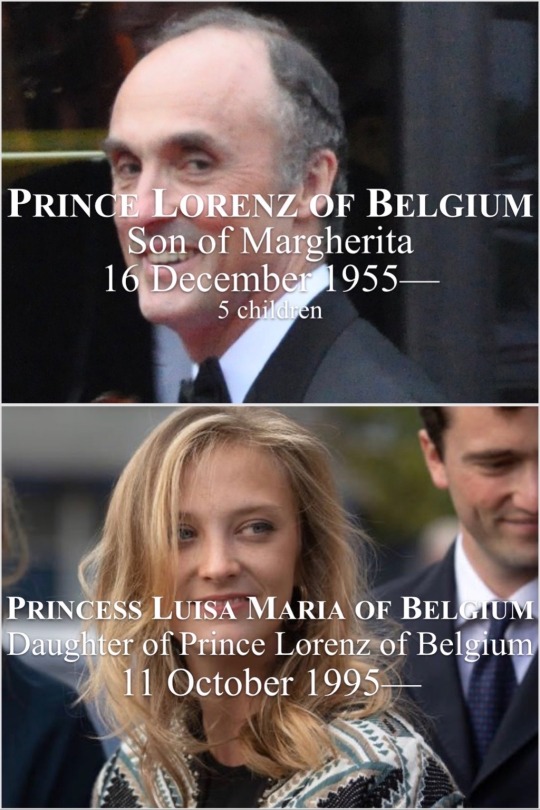
Descendants of the Tudors
#descendants of the tudors#henry vii#margaret tudor#james v#mary queen of scots#james vi and i#elizabeth stuart#charles i louis#elizabeth charlotte madame palatine#philippe ii duke of orléans#charlotte aglaé d’orléans#maria teresa felicitas d’este#louise marie adélaïde de bourbon#louis philippe i#ferdinand philippe duke of orléans#prince philippe count of paris#princess hélène of orléans#margherita archduchess of austria este#prince amedeo duke of aosta#prince lorenz#princess luisa maria
2 notes
·
View notes
Text

Empress Zita of Austria, Queen of Hungary
Artist: Unknown
Medium: Oil painting
Zita of Bourbon-Parma
Zita of Bourbon-Parma (Zita Maria delle Grazie Adelgonda Micaela Raffaela Gabriella Giuseppina Antonia Luisa Agnese; 9 May 1892 – 14 March 1989) was the wife of Charles I, the last monarch of Austria-Hungary. She was also the last Empress of Austria and Queen of Hungary, in addition to other titles. She was declared Servant of God by Pope Benedict XVI.
Born as the seventeenth child of the dispossessed Robert I, Duke of Parma, and Infanta Maria Antonia of Portugal, Zita married the then Archduke Charles of Austria in 1911. Charles became heir presumptive to the Emperor Franz Joseph I of Austria in 1914 after the assassination of his uncle Archduke Franz Ferdinand of Austria, and acceded to the throne in 1916 after the elderly emperor's death.
#portrait#hungarian empress#zita of austria#painting#artwork#hungarian history#bust length#white dress#tiara#necklace#zita of bourbon-parma#queen of hungary#empress zita#oil painting#jewelry#roses
12 notes
·
View notes
Photo
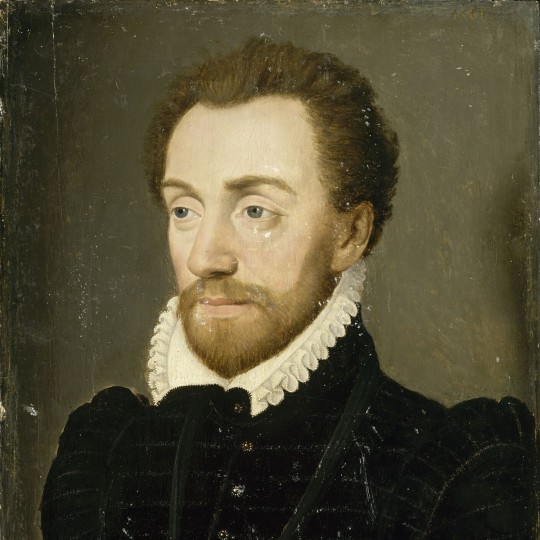
Louis I de Bourbon, Prince of Condé
Louis I de Bourbon (l. 1530-1569) was a descendant of Louis IX of France (r. 1226-1270) and founder of the House of Condé. The Prince of Condé proved his valor as a Huguenot military leader during the first three French Wars of Religion and died at the Battle of Jarnac in 1569.
Historical Context
The Protestant Reformation disrupted the religious status quo of the early 1500s in Europe when multitudes embraced the teachings of Martin Luther (l. 1483-1546) and John Calvin (l. 1509-1564). Protestantism made gains in France among the nobility and commoners alike in the first decades of the 16th century and encountered opposition from the Catholic Church. By the mid-16th century, Protestants who followed the teachings of Calvin were known as Huguenots or Calvinists. Marguerite de Navarre (l. 1492-1549) protected Protestant leaders and supported reform efforts in the Catholic Church. She was the sister of King Francis I of France (r. 1515-1547), the mother of Huguenot leader Queen Jeanne d'Albret (l. 1528-1572), and the grandmother of Henry of Navarre (l. 1553-1610), who converted to Catholicism in 1593 to become Henry IV of France, the first Bourbon king. The Protestant challenge to the status quo of the Catholic Church in France eventually led to a bloody struggle between Protestants and Catholics during the French Wars of Religion (1562-1598).
The royal houses of France were often in competition and made alliances according to political expediency. Political intrigues, assassinations, and executions were never far from religious questions. The House of Guise, a minor offshoot of the Dukes of Lorraine, was the most ardent archenemy of Protestants. The Bourbons were princes of royal blood, but distant from the throne and with modest wealth. They were also viewed with suspicion since Charles III de Bourbon had plotted with Henry VIII of England (r. 1509-1547) and Charles V, Holy Roman Emperor (r. 1519-1556) to take up arms against King Francis I. Positions among the high nobility became clearly established with the all-powerful Guises on one side and the Bourbons on the other.
Continue reading...
18 notes
·
View notes